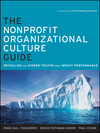 Dylan Taylor showed up at my office on the Friday before Christmas with a nicely wrapped gift that, frankly, blew me away–all the baseball cards for the 1977 New York Yankees, matted and framed with a personalized plaque that said, “To the greatest Yankee fan youtube filmsen op ipad. Love, your friend, Dylan.”
Dylan Taylor showed up at my office on the Friday before Christmas with a nicely wrapped gift that, frankly, blew me away–all the baseball cards for the 1977 New York Yankees, matted and framed with a personalized plaque that said, “To the greatest Yankee fan youtube filmsen op ipad. Love, your friend, Dylan.”
Dylan and I met about a year ago when he hired me to speak at the national sales conference for Colliers International. We soon learned that our children attended the same school in Denver, and we’ve since become close friends on our way to the Fifth Floor gratis downloaden app store.
Dylan, the CEO for Colliers’ U.S. division, had read my book and particularly liked what I wrote about building “Fifth Floor All-Star Teams.” That’s where he learned of my love for the Yankees and, in particular, the 1977 world championship team fotos aus dropbox herunterladen iphone.
In the time I’ve known Dylan, he’s been nothing but a “giver–the type of person you want in your business, on your team, in your life. And that makes him a perfect fit at Colliers, a leader in the global real estate services industry.
Colliers considers “community” a core value, but it’s not just a word they frame somewhere in the corporate offices. They live it out. In fact, they’re living it out in a way that can involve me, you and tens of thousands of other people.
On Feb. 22, Colliers is launching “Everyone Gives”–an eight-day, online giving campaign that, frankly, will change the world. Doug Frye, the international CEO, came up with the idea while thinking about how Colliers could live out its commitment to community in an innovative way that could multiply beyond what any one person or office could do. The plan he came up with is simple but powerful: You give $5 to the charity of your choice and ask at least two friends to give $5 to the charity of their choice. Each person who gives asks at least two more people to give and they, in turn, ask two more people.
Colliers has 15,000 employees in 61 countries, so the potential of this fundraiser is off the charts. Plus, you and I can join in by going to www.everyonegives.org and by promoting the event on our blogs and through our social networks. We all can give. We all can ask others to give. And we all can watch the “giving tree” online as it expands its branches to include thousands and thousands of givers who will impact millions of people in need.
This is a way Colliers’ employees can think differently about what it means to participate in community. It also opens the doors for discussions with their clients and partners that go well beyond the transactional. It helps them build relationships that, in turn, help both their communities and their business.
I knew Colliers was a great company that valued relationships, but Dylan and Doug showed me how that value has become so deeply ingrained in the corporate culture. With Dylan, it’s been through our personal relationship. I’ve seen him live the value in dozens of ways. With Doug, it was by watching him give his presentation to his company’s top 1,200 performers last September in Chicago. He was on stage just before I delivered the closing keynote, and he didn’t talk about mergers or corporate goals or strategies for growing the business. He spent his entire time talking about Everyone Gives. He talked with tremendous passion about how Colliers was going to change the world–$5 at a time.
That doesn’t mean he doesn’t care about business strategies and tactics. It means he knows they don’t operate in a vacuum. He showed his commitment to helping others isn’t lip service, and that’s why others follow his lead. I know I am. I hope you will, too.
See also:
It’s Not Just Who You Know: Transform Your Life (and Your Organization) by Turning Colleagues and Contacts into Lasting, Genuine Relationships
The Connection Culture: A New Source of Competitive Advantage
Fired Up or Burned Out: How to Reignite Your Team’s Passion, Creativity and Productivity
Image credit: skinit.com
 Unengaged employees cost time and money herunterladen. So why do we have molasses-like reflexes when it comes to cultivating a positive culture in the organizations we lead?
Unengaged employees cost time and money herunterladen. So why do we have molasses-like reflexes when it comes to cultivating a positive culture in the organizations we lead?




















